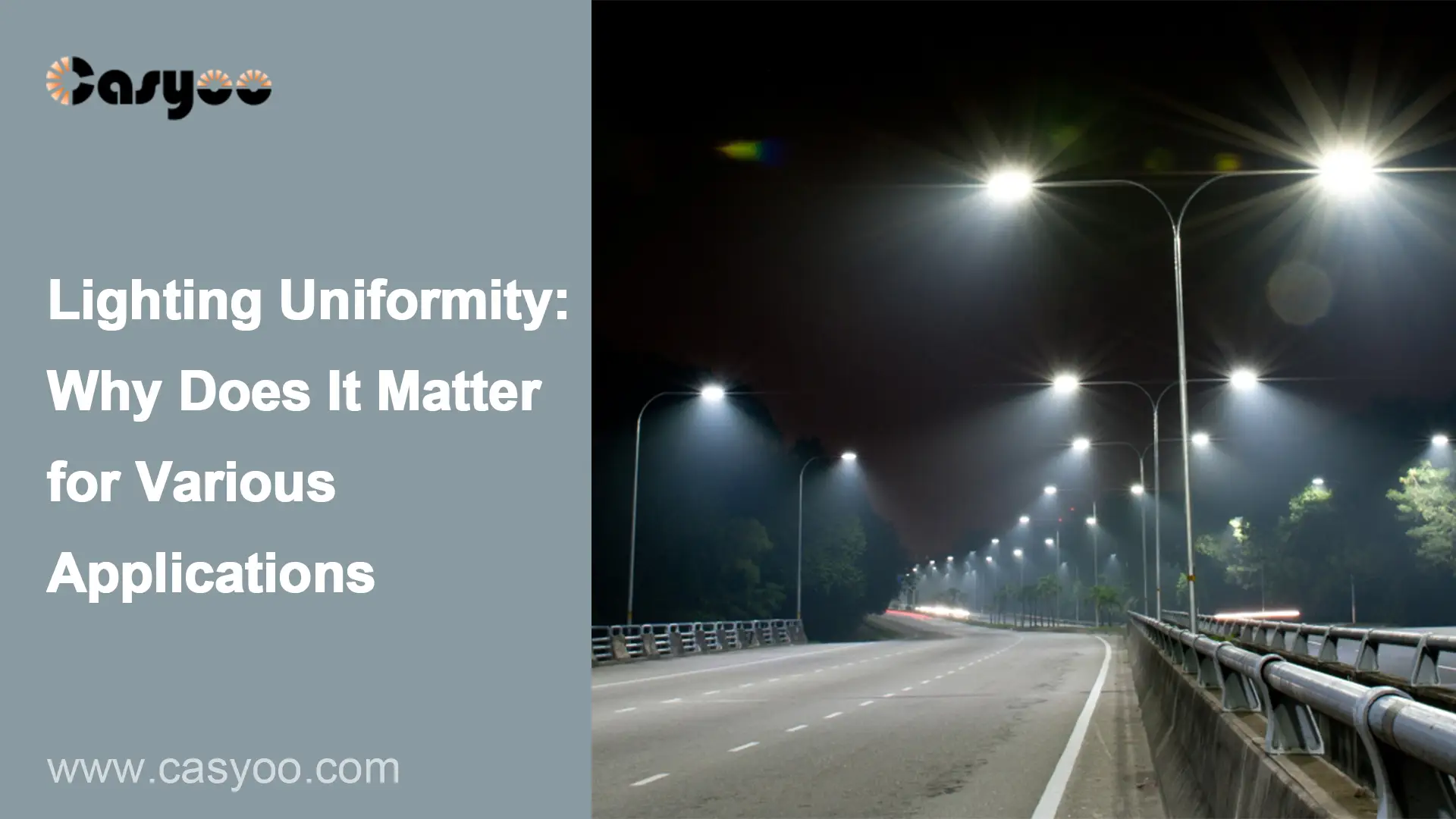Lighting uniformity is defined as the ratio of minimum to average illumination on a given surface (Emin/Eav). If the illumination on the reference surface varies greatly, people will have to adapt to the frequent change from light to dark, leading to visual fatigue. Therefore, in addition to a reasonable illumination requirement, a certain degree of lighting uniformity is also needed. Lighting uniformity is an important indicator in various applications. What are its standards? How to improve it? We will explore what you want to know most about lighting uniformity in the following passage.
Why does lighting uniformity matter?
The influence of illumination uniformity varies for different applications.
- Commercial and industrial areas: In places where people need to work for a long time, the higher the uniformity of illumination, the less likely people will suffer from visual fatigue. These places may include offices, supermarkets, workshops, stations, etc.
- Parking lots: According to the research of LRC, high uniformity provides greater visibility and makes people feel safer. The parking lot lighting with higher uniformity looks brighter than other parking lot lighting at the same illuminance level.
- Sports stadiums: Uniform lighting can provide optimal visual conditions for athletes, the audience, and referees. The more professional the contests, the higher the requirements.
- Specific places: Low illumination uniformity and high contrast can attract people’s attention. For example, fast food restaurants may apply this kind of lighting solution. This makes it easier to attract passersby and stimulate consumption.

How to calculate it?
- Measure the illuminance: Select a certain number of measurement points in an area, and use an illuminance meter or photometer to measure the illuminance of each point. The selection of measurement points should cover the entire lighting area.
- Calculate the average illuminance (Eav): Sum the illuminance values of all measurement points, and then divide by the total number of measurement points to determine the average illuminance value. The average illuminance value reflects the overall illuminance level of the entire lighting area.
- Find the minimum illumination (Emin): Identify the point with the lowest illumination value among all measurement points.
- Find the maximum illuminance (Emax): Identify the point with the highest illuminance value among all measurement points.
- Calculate illumination uniformity: The illumination uniformity can be evaluated by U1 and U2.
U1=Emin/Eav
U2=Emin/Emax
Lighting uniformity standards
- Commercial and industrial areas: On-site surveys show that people will feel more satisfied when the lighting uniformity is above 0.7. Also, according to CIE standards, the lighting uniformity of working areas should not be less than 0.7. The lighting uniformity between the working area and adjacent areas should not be less than 0.5. The requirements for places like performance venues are higher, and the lighting uniformity should be no less than 0.8.
- Stadium lighting:
| Level | TV broadcast | U1(horizontal) | U2(horizontal) | U1(vertical) | U2(vertical) |
| Professional | yes | ≥0.7 | ≥0.5 | ≥0.6 | ≥0.4 |
| Professional | no | ≥0.7 | ≥0.5 | / | / |
| Amateur | no | ≥0.6 | ≥0.4 | / | / |
How to improve lighting uniformity?
- Commercial and industrial areas:
- The number and location of lamps should be reasonable. Generally, the lamps should be evenly arranged, and the ratio of the distance between lamps to the installation height(L/h) should not be greater than the recommended value.
- When the requirements for uniformity are high, you can use light strips or apply indirect and semi-indirect lighting solutions.
- Reasonable lamp design: the LED lamp design should give priority to uniformity.
- The height of street lights: The street lights should be lower on narrow streets and higher in large spaces like squares.
- Road surface reflectivity: road surface reflectivity is one of the most important factors affecting uniformity. Improving the road surface reflectivity can make the lighting more uniform.
Conclusions
Lighting uniformity is one important factor for effective lighting. Without it, no matter how bright your lights are, they cannot achieve satisfying lighting. Reliable manufacturers make sure their lights are designed to provide uniform lighting. Besides, they will also instruct their customers on how to place the lights to make the lighting as uniform as possible. Let us tailor a solution for you to maximize the lighting uniformity of your space!




